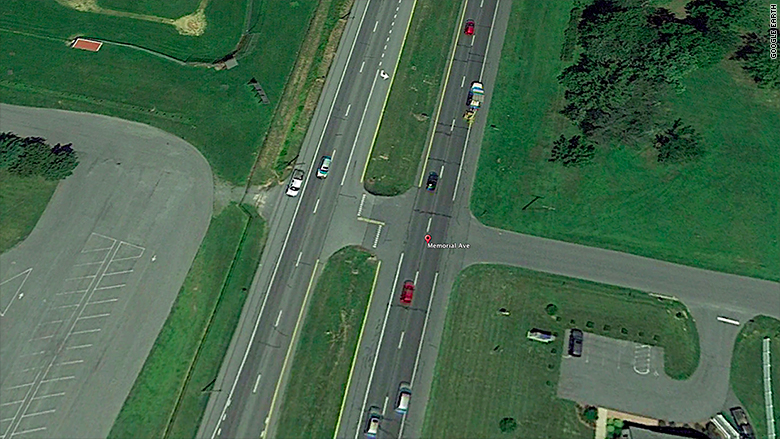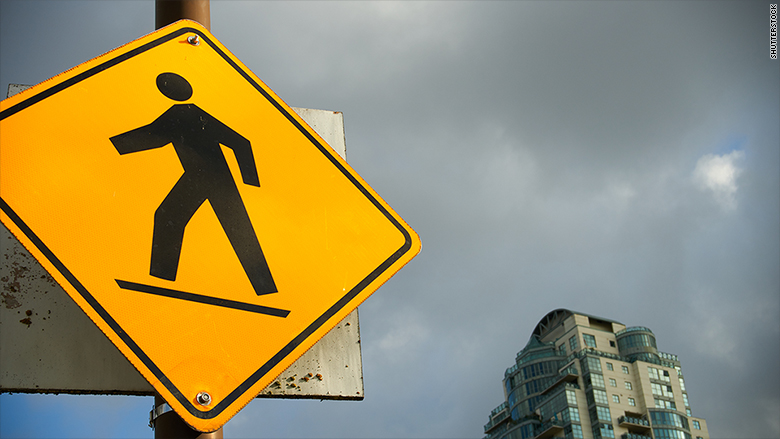
If you're crossing a street in Florida or Delaware, good luck.
The two states hold the dubious distinction of the highest rate of pedestrian fatalities in the country, according to newly released data.
There's renewed attention to pedestrians' woes as the United States experiences an unprecedented spike in pedestrian deaths.
It's a new story with old culprits being blamed -- people who are distracted, drunk, crossing in unexpected locations or wearing dark clothing.
But experts say there's a silent culprit -- the road itself.
And it helps explain why Florida and Delaware are just so hostile to pedestrians. Pedestrians in Jacksonville, Florida, die at more than four times the rate of those in Seattle or Boston.
Related: Smartphones may be to blame for spike in pedestrian deaths
Florida and Delaware don't have a monopoly on drunk or distracted pedestrians who happen to be jaywalking in dark clothing. What they do share is dated road design.
The bulk of Delaware's pedestrian deaths come on three roads -- US-13, US-40 and US-2. They were not initially designed with pedestrians in mind, according to Adam Weiser, safety programs manager for the Delaware Department of Transportation.
Cars drive at highway speeds on these roads. Sidewalks and crosswalks are rare. The lanes are 12-feet wide -- the standard width for an interstate that carries vehicles going 65 mph. With wide lanes, drivers feel more comfortable at high speeds, adding danger for pedestrians.

Pedestrians who want to cross these roads will generally need to walk out of their way to access a crosswalk.
"If your nearest intersection is 1,000 feet, then a pedestrian is not going to walk 1,000 feet out of their way to cross a street," said DeWayne Carver, the complete streets program manager at the Florida Department of Transportation.
To make roads safer, they need to be designed with ample areas for pedestrians to cross. Florida is updating its road design manual to better acknowledge that pedestrians and cyclists use the road too.
Decisions made decades ago are costing Florida and Delaware today. According to Carver, many roads were initially categorized as rural roads, which aren't built with foot traffic in mind. But in the 30 to 40 years since, there's been development and populations have grown. The rural designation often no longer makes sense.
"In the past, every time we did a project, we were always told, 'By the way, speed this road up, it's supposed to be running at 45 [mph]," Carver said of redesigning rural roads. Now, as Florida is rethinking its approach to road design, Carver says they're considering more than just traffic speed.

To make roads safer, governments can narrow lanes, accentuate curves, and add trees and buildings closer to the edge of the road. The more drivers feel crowded, the slower they will drive.
Seattle, a leader in pedestrian safety, has residential streets that are only 25 feet wide. It's difficult for a vehicle to drive at a speed fast enough to significantly injure a pedestrian.
To better protect pedestrians, Seattle analyzed seven years of collision data, according to city traffic engineer Dongho Chang. It found that angled intersections were most dangerous. Drivers could make faster, more dangerous turns when not at T-shaped intersections, which have 90-degree turns.
So Seattle tweaked crosswalk signals, giving pedestrians several seconds head start on cars, to make them more noticeable. It added some left turn signals for drivers, reducing the likelihood of drivers racing to make a turn and failing to see a pedestrian.
The city has also committed to "complete streets," which are designed to serve not only motorists, but also pedestrians and cyclists.
While pedestrians and drivers need to do their part to keep roads safe, it's clear there's a lot that road designers can do to help too.

